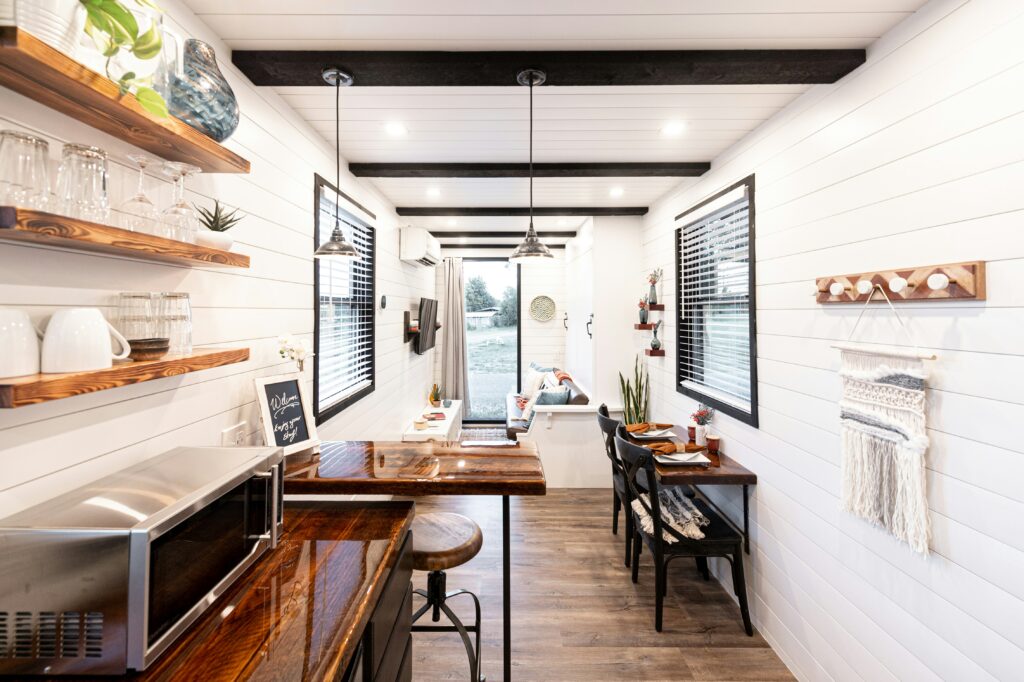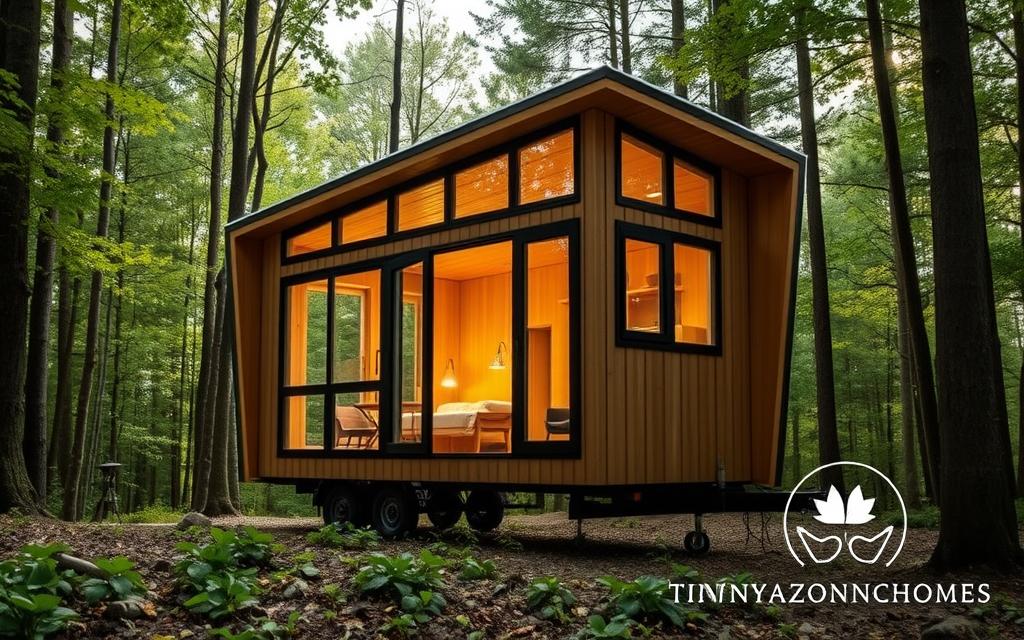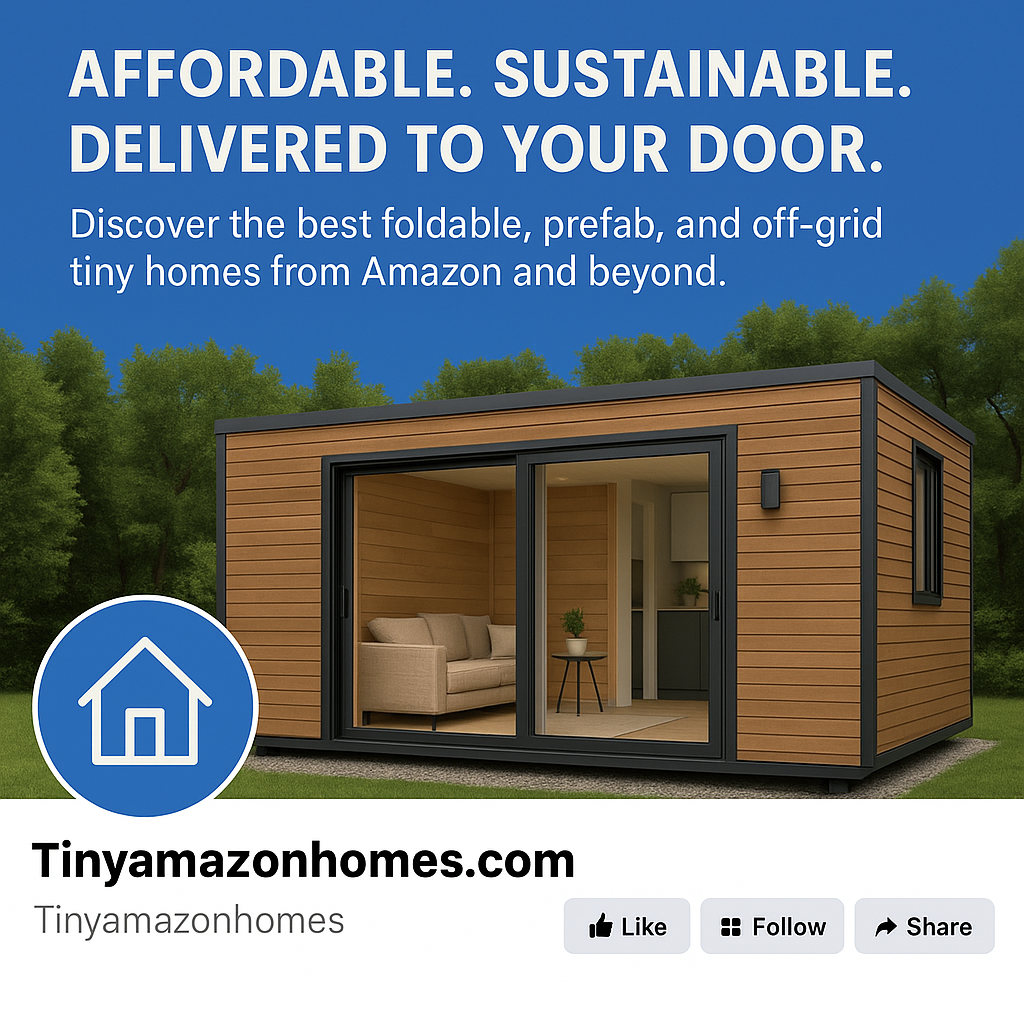The housing market is changing fast, moving towards new, space-saving ideas. People want homes that are affordable and can change to fit their needs. Portable living solutions are becoming more popular because of this.
The affordable tiny house is a big hit for its style and modern feel. These homes, made from containers, are flexible and cozy. They’re perfect for those looking for different housing options.
If you’re curious about these flexible homes, check out tinyamazonhomes.com. It’s a great place to learn more about foldable and expandable tiny homes.
Key Takeaways
- Portable living solutions are on the rise due to their affordability and adaptability.
- Expandable prefab container homes offer a modern and stylish housing option.
- These homes provide flexibility and comfort, making them an attractive alternative.
- Tiny homes are designed to be space-saving, addressing housing needs efficiently.
- Visiting tinyamazonhomes.com can offer more insights into flexible living solutions.
Understanding Foldable & Expandable Tiny Homes
Foldable and expandable tiny homes are changing how we think about housing. They are designed to be small but can grow to meet your needs. This makes them perfect for those who want a flexible living space.
What Defines These Innovative Living Spaces
These homes are easy to move and can grow on-site. They often have modular designs that let you add more rooms when needed.
They are built with sustainable materials and save energy. Their affordability and flexibility are why they’re becoming more popular.
Historical Development of Transformable Housing
Transformable housing isn’t new. Many cultures have used expandable or collapsible homes for temporary or nomadic living.
Today, thanks to new technology and materials, we have more advanced homes. Modern designs use hydraulic systems and mechanical expansion mechanisms for easier expansion.
Current Market Trends in the United States
The demand for foldable and expandable tiny homes in the U.S. is rising fast. People want mobile living spaces that are flexible and affordable.
| Region | Demand | Average Price |
|---|---|---|
| Northeast | High | $80,000 |
| South | Moderate | $70,000 |
| West Coast | Very High | $90,000 |
For more info on foldable and expandable tiny homes, visit tinyamazonhomes.com.
Popular Types and Designs of Space-Saving Housing
Fold-out micro homes lead the way in flexible living. They offer unique solutions for today’s homeowners. These homes use space wisely and have a small footprint, fitting many lifestyles.
Hydraulic and Mechanical Expansion Systems
Modern foldable homes stand out with their expansion systems. Hydraulic and mechanical expansion systems let these homes grow from small to large. For example, CHOMEX’s portable container homes expand to almost three times the size of regular homes.

Origami-Inspired Folding Structures
Some foldable homes take inspiration from origami. They use complex folds for easy transport and setup. These innovative structures look unique and solve problems for temporary or seasonal homes.
Shipping Container Conversions with Expandable Elements
Shipping container homes are gaining popularity. They add expandable elements to become large living spaces. This mix of industrial look and modern comfort is found at tinyamazonhomes.com.
Trailer-Based Mobile Expandable Units
Trailer-based homes are another exciting option. They can be towed to new places, giving homeowners freedom to move. Their ability to expand makes them comfortable in various settings.
Key Benefits of Foldable & Expandable Tiny Homes
The design of foldable and expandable tiny homes brings many benefits for today’s living. These mobile living spaces are more than a trend. They mark a big change in how we see housing and lifestyle.
Adaptability to Changing Space Requirements
Compact modular homes are great because they can change size as needed. They’re perfect for growing or shrinking families. These homes can adjust to fit your life’s changes.
Transportation and Relocation Advantages
Foldable and expandable tiny homes are easy to move around. This is great for people who often have to relocate for work or personal reasons.
Financial Benefits and Return on Investment
Buying a foldable or expandable tiny home can save money. They cost less than regular houses and use less energy. This can lead to big savings over time.
| Financial Aspect | Traditional Homes | Foldable/Expandable Tiny Homes |
|---|---|---|
| Initial Cost | High | Low |
| Energy Efficiency | Variable | High |
| Maintenance Cost | High | Low |
Reduced Environmental Footprint
Tiny expandable houses are good for the planet. They use space and materials wisely. For more options, check out tinyamazonhomes.com.
Choosing foldable and expandable tiny homes helps the environment. You also get the perks of modern, flexible living.
Essential Considerations Before Purchasing
Before buying a foldable or expandable tiny home, think about several important factors. It’s not just about picking a design that fits your lifestyle. You also need to consider legal, environmental, and practical aspects.
Legal and Zoning Requirements Across Different States
First, check the legal and zoning rules for tiny homes in your area. Laws and rules change a lot from state to state and even within cities. Some places might need a certain size, type of foundation, or specific hookups.
To understand these rules, look up local zoning laws and building codes. Visit tinyamazonhomes.com for help finding the right resources for your location.
| State | Zoning Requirements | Building Codes |
|---|---|---|
| California | Varies by county; some allow tiny homes as ADUs | Must comply with California Building Code |
| Oregon | Has specific laws allowing tiny homes on wheels | Follows Oregon Residential Specialty Code |
| Texas | Zoning laws vary by city; some are more tiny-home friendly | Must adhere to local building codes, often based on IRC |
Climate Compatibility and Weather Resistance
It’s also key to think about how your tiny home will handle the local weather. If you live in a place with hurricanes, snow, or extreme heat, your home needs to be built to withstand it.
Weather Resistance Tips:
- Ensure proper insulation for temperature regulation
- Choose materials that can withstand local weather conditions
- Consider reinforced structures for areas with high winds or seismic activity

and Installation Options
The foundation and installation of your tiny home are crucial for its stability and life span. You might choose a permanent foundation, a portable setup, or a modular design that can grow or shrink.
Each choice has its own benefits and drawbacks, like cost, flexibility, and code compliance.
Utility Connections and Off-Grid Capabilities
Think about how you’ll handle utility connections. Some tiny homes are off-grid, using solar, rainwater, and composting toilets. Others need traditional hookups for water, electricity, and sewage.
Off-grid capabilities offer flexibility and lower environmental impact. But, they need careful planning and might cost more upfront.
By carefully thinking about these key points, you can make a smart choice when buying a foldable or expandable tiny home. This ensures it meets your needs and offers a comfortable, eco-friendly living space.
Conclusion: Embracing Flexible Living Solutions for the Future
Tiny expandable houses mark a new era in living. They mix practicality with creativity. This trend is growing fast, especially for those who want mobile living spaces.
These small, adaptable homes are changing how we see housing. They offer efficient and flexible living options. For more information, check out tinyamazonhomes.com.
Looking ahead, flexible living solutions are crucial for a greener future. Foldable and expandable tiny homes are leading the way. They promise to shape the future of where we live.
